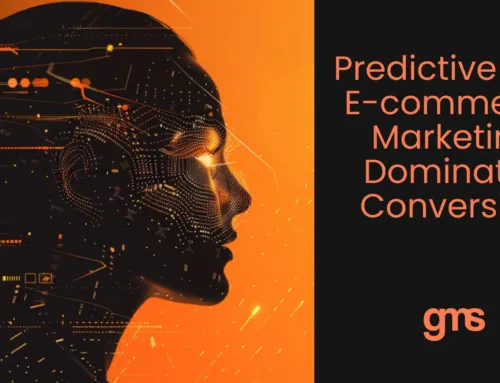Performance marketing lets you track how well your online campaigns are doing. All while making sure the money you spend actually delivers the results you want.
You’ve probably seen thousands of ads when you go online. After all, almost every webpage nowadays has ads. And more and more brands are looking to ads to generate leads and sales.
But have you ever wondered how businesses keep track of whether those ads are working or not?
That’s the job of performance marketing.
This is a type of marketing strategy that lets marketers and businesses gather data on their online campaigns 24/7. And this happens all thanks to developments in fields like data transparency and e-commerce.
Keep reading to learn more about performance marketing and how it can benefit your business.
How Does Performance Marketing Work?
This kind of marketing works when a brand pays an advertising platform. But only when the end goals of the marketing campaign have been met.
This is unlike traditional advertising.
In that type of advertising, you pay a fee upfront to a publisher or marketing service. Then, they’ll give you the space to run your ads, but without any way to measure if it’s actually working.
With performance marketing, you’ll only spend money for successful transactions. This can include delivering clicks, leads, or sales generated from the campaign.
Plus, it gives you the benefit of consistently tracking and measuring those transactions. That means you’ll know exactly where your money is going.
You’ll also be more confident knowing that you’ve already converted your target audience before actually handing out money to the ad service.

Tips for Implementing Performance Marketing in Your Business
There isn’t one single approach for doing performance marketing. It depends on a lot of factors like your business objectives and target audience.
Here are a few tips to consider when launching your campaign:
1. Set clear objectives
Creating your own performance marketing strategy all starts with setting your campaign goal.
Are you looking to sell more products? Or are you at the stage of generating brand awareness? Maybe you just want to increase engagement.
Having clear objectives lets you determine which ad platforms would best fit your target.
2. Create a good offer and landing page
Your offers should be enticing enough that anyone who sees them would immediately click your ad.
Similarly, your offers should be placed on a good landing page since this is the first thing a visitor sees after clicking on your ad.
These will become easier once you know who your target audience is. Find out what problems they need solving. Then, craft your messaging and ads to appeal to their needs.
3. Use the best traffic sources
Your traffic should be coming from reputable sources. Potential customers will become sceptical about your business if untrustworthy sources are advertising you.
In addition, you should also diversify the channels you use. So you can further spread the reach and exposure of your campaign.
4. Track and check your data regularly
Be consistent in measuring the gains and losses of your marketing campaigns. Doing so lets you assess which areas you need to improve on.
And if you don’t make the necessary adjustments based on your data, your targets won’t grow.
5. Prepare for potential risks
There will always be potential challenges in any marketing campaign.
With performance marketing, you might risk facing issues like brand safety and publisher fraud. The best way to avoid this would be to focus on using high quality and reputable advertising platforms.

How to Measure Your Performance Marketing
The thing about performance marketing is that it’s used specifically to drive actions like clicks or generating leads.
You, as the brand, can then track and measure those actions through a set of pre-defined KPIs or key performance indicators. These are quantifiable values that you can use to optimise your campaign and improve your marketing performance over time. This is what comprises your ROI or return on investment for your ad campaign.
You need to be consistently measuring your ROI for your digital marketing strategy to work.
To help you along, these are some of the commonly used KPIs and metrics in performance marketing:
- Cost per Mile (CPM) – Also known as cost per impression. This is the amount you pay per 1 thousand times your ads are shown on the platforms you use.
- Cost per Click (CPC) – This is the average amount you pay each time that your ad gets clicked on.
- Cost per Leads (CPL) – This is the cost you’ll pay when your ads provide you with sign-ups from interested consumers.
- Cost per Sales (CPS) – This is what you pay for every direct sale generated by customers from your ads.
- Cost per Acquisitions (CPA) – This is the total cost of a single customer completing an action, which then gets them into your sales funnel.
- Lifetime Value (LTV) – This is the estimated spend of your acquired customers based on their relationship with your brand. This metric makes use of more advanced tools like predictive analytics.
The Best Channels for Performance Marketing
There are several channels that are most effective for performance marketing.
Advertising agencies and marketers use the following to drive the most traffic:
Native Advertising
This approach positions your ads in a way that’s typical in a web page.
A good example would be the ads on e-commerce websites. These “native” ads sit beside other organic content, letting you naturally promote your content.
Banner Ads (Display Ads)
You’ve probably seen these types of ads all over the websites you visit. They can appear at the top or left and right sides of your web page.
These ads though have lost their appeal due to the popularity of ad blockers. But a lot of brands still find them effective.
Content Marketing
The focus of content marketing is providing valuable content to your audience. It’s about educating them along with putting your brand within that context.
Popular types of content marketing include blogs, e-books, and case studies.
Search Engine Marketing (SEM)
93% of online traffic starts with a user typing into a search engine and seeing the top results. So, your site needs to be the first thing people see when they search for a product or service.
Social Media
Pretty much everyone is on social media today. It’s become a goldmine for target audiences and potential customers.
What’s more, people can share your sponsored content organically and expand your reach. Plus, platforms like Facebook offer resources that can help track and measure your KPIs.
Top Performance Marketing Trends of 2022
It’s always good to stay on top of the trends that can boost your performance marketing strategy.
And these are the ones to look out for this 2022:
Tracking and attribution updates
Tracking and attribution collect data about a person’s search habits and preferences. That data is then used by ad platforms to target specific users.
For instance, apps can track the data of a middle-aged man who loves golf. The ads he sees will then be customised according to those interests.
For 2022 however, updates like Apple’s iOS14 have given users direct control over data sharing preferences. They can ask apps to not track their data and search habits at all.
As a result, targeted ads can become less effective since ad platforms will no longer have access to customers’ data and preferences.
Influencer marketing
The influencer industry has grown significantly over the last few years.
Partnering with influencers now can be a great way to promote your brand. Not to mention providing more opportunities for your performance marketing strategy.
Instagram’s new Branded Content Features for example have given businesses more opportunities to partner with creators and influencers.
You can now use data and filters to find the best influencers for your marketing campaigns.
AI and machine learning
Artificial intelligence and machine learning are seen to have a significant impact on predictive analytics for 2022.
What does this mean?
Well, by having AI analyse data from your past marketing campaigns…
You can actually predict the performance of your future campaigns.
Automated machine learning options can also help you save a lot of time in tracking and monitoring your KPIs. They’ll analyse and measure the data from your ad campaign for you.
Performance Marketing Can Bring Huge Benefits to Your Business
With performance marketing, you are assured that your money will go directly to converting your target audience. Plus, it provides you with quantifiable values to track your marketing performance.
And since it’s ROI-driven, performance marketing focuses on improving your business performance.
Ready to make use of performance marketing in your strategy? Go ahead and schedule your free consult with one of our GMS experts.




